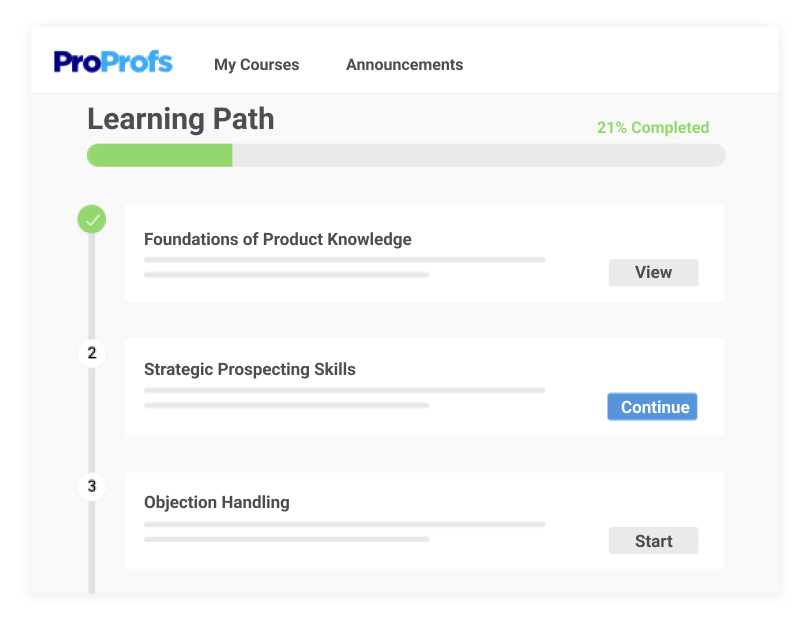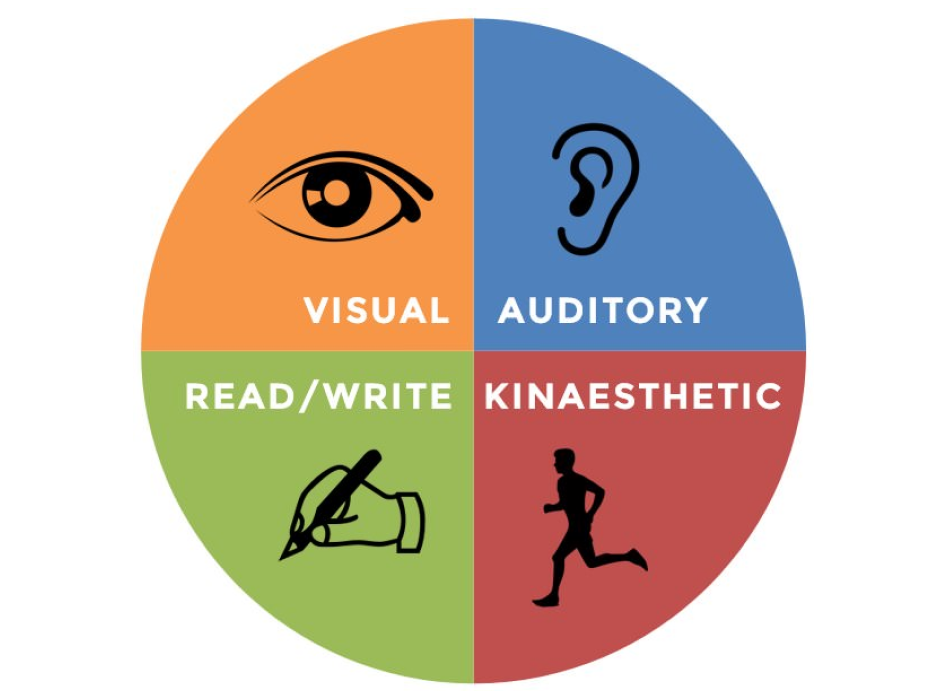In the training industry, we often see the gap between what instructors teach and what learners grasp. Any idea why this disconnect happens? Even the best content, if not delivered engagingly, can leave learners confused and disinterested. How do we fix this? That’s where eLearning best practices come into play.
As someone passionate about training, I understand the challenges you face and the solutions you seek.
Let’s unbox the best practices of online learning and transform our approach to eLearning together.
What Makes a Good eLearning Course?
Before I share the best practices for online learning, let’s pause and consider what makes an eLearning course genuinely effective.
It’s not about labeling courses as good or bad; it’s about understanding the elements that resonate with both instructors and learners.
An impactful eLearning course bridges the gap between teaching and comprehension. It’s designed with the learners’ experience in mind, ensuring that each module is accessible, engaging, and informative.
What drives a learner’s motivation? How can we make complex information digestible?
These questions guide us toward creating courses that educate and inspire. So, let’s explore these crucial elements that elevate an eLearning course from ordinary to extraordinary.
1. Structure and Learning Objectives
The structure and learning objectives are the backbone of an eLearning course. They guide learners through a clear path of what’s expected and what they’ll achieve.
- Clear Learning Objectives: A well-defined learning objective sets the direction for the course and provides a benchmark for measuring success.
Pro tip✨ Anchor your course with SMART goals—Specific, Measurable, Achievable, Relevant, Time-bound. They’re the compass that guides learners to success and helps you track their journey effectively. - Cohesive Structure: The course content should be logically organized, with each section building upon the previous one. Avoid including unnecessary elements that deviate from the core learning objectives.
2. Engagement and Interaction
“People expect to be bored by eLearning. Let’s show them it doesn’t have to be like that!” – Cammy Bean
Engaging elements are the heart of the course, and they pump life into it with varied content and interactive elements that cater to different learning styles.
- Variety in Content Delivery: To keep learners engaged, incorporate multimedia elements like images, videos, audio clips, and simulations.
- Interactive Activities: Integrate quizzes, polls, drag-and-drop exercises, or branching scenarios to make the learning process active and assess comprehension.
- Responsive Design: Ensure the course adapts seamlessly to different devices (desktop, mobile, tablet) for a smooth learning experience on any platform.
Here’s a quick video on: How to Add Media to Your Online Courses
3. Technical Delivery and Accessibility
These are the limbs of an eLearning course, as they offer the flexibility to learn anytime, anywhere, on any device.
- Mobile Compatibility: A significant portion of learners access eLearning on mobile devices. Ensure the course is mobile-friendly for on-the-go learning. We use a mobile LMS to ensure courses are adaptable across all devices. Here’s the mobile LMS; you can also try it!
- SCORM Compliance: SCORM (Sharable Content Object Reference Model) ensures compatibility with various LMSs for wider accessibility. Here’s a guide on how to add Scorm content.
- Accessibility Features: Consider closed captions for videos, transcripts for audio content, and keyboard navigation for an inclusive learning experience for all users.
4. Additional Considerations
And let’s not forget the additional considerations—the vital organs that enrich the learning experience with microlearning, gamification, and performance tracking.
- Microlearning: Break down complex topics into smaller, bite-sized modules for easier consumption and knowledge retention.
- Gamification: Implement game mechanics like points, badges, and leaderboards to motivate learners and make the learning process more enjoyable.
- Performance Tracking: Integrate assessment tools to track learner progress, identify areas needing improvement, and personalize the learning experience. Here’s a guide for you to learn more about tracking employee progress.
Together, these elements form a robust body of eLearning, ready to empower instructors and inspire learners.
What Are the 14 Best Practices of Online Learning?
The modern learner craves engaging, relevant, and bite-sized knowledge. To compete in today’s L&D field, you need to follow eLearning best practices and strategies that drive learner engagement and performance improvement.
Here are 14 best practices of online learning that I’d suggest:
1. Know Your Audience
- Why it’s important: Understanding your learners’ demographics, prior knowledge, learning styles, and motivations is crucial. It shapes how you present information and cater to their needs.
- How to execute: Conduct surveys and training needs assessments or analyze existing learner data to identify their background, preferred learning styles (visual, auditory, kinesthetic), and pain points.
Watch: How to Create an Assessment Online
2. Align with Learning Objectives
- Why it’s important: Clear learning objectives ensure your eLearning has a purpose and guide content creation. They also help learners understand what they will gain by completing the course.
- How to execute: Start with the end in mind. Define specific, measurable, achievable, relevant, and time-bound (SMART) objectives that align with the overall learning goals.
3. Chunk Content for Microlearning

- Why it’s important: Our attention spans are shorter. Microlearning delivers bite-sized, focused modules that learners can easily digest and retain information better.
- How to execute: Break down complex topics into smaller modules (5-10 minutes each). Use clear headings, bullet points, and white space for better readability.
Here’s our approach: We use an LMS to develop learning paths that integrate multiple courses. This method directs our learners to progress from basic to master level in a specific course.
4. Embrace Mobile Learning
This is among one of the top eLearning best practices considered not just by me but industry leaders as well. Even the statistics say that the mobile learning market is predicted to expand by $46.9 billion by 2024 and could reach $80.1 billion by 2027.
- Why it’s important: Learners access information on the go. Mobile-friendly eLearning allows for flexibility and caters to busy schedules.
- How to execute: Ensure your eLearning platform and content are responsive and function seamlessly on various devices (desktops, tablets, smartphones).
5. Leverage the Power of Videos
- Why it’s important: Videos are engaging and cater to visual learners. They can explain complex concepts, showcase real-world applications, and add a human touch.
- How to execute: Use high-quality videos with clear audio and concise narration. Keep them short (ideally under 6 minutes), and consider including captions and transcripts for accessibility.
6. Make It Interactive With Assessments and Activities
- Why it’s important: Interaction keeps learners engaged and reinforces knowledge retention. This is one of the best practices for online learning as assessments and activities allow for self-evaluation and gauge understanding.
- How to execute: Include quizzes, polls, drag-and-drop activities, gamified elements, and scenario-based learning. Provide immediate feedback and explanations for wrong answers. Here’s how you can share immediate feedback with learners.
7. Accessibility Is Key
- Why it’s important: Accessible eLearning ensures everyone can participate regardless of ability. It promotes inclusivity and caters to diverse learning needs.
- How to execute: Use closed captions for videos, provide transcripts for audio content, offer alternative text descriptions for images, and ensure proper keyboard navigation for all elements.
8. Drip-Feeding Content for Better Retention
- Why it’s important: Spacing out learning over time enhances knowledge retention compared to cramming information.
- How to execute: Deliver content in smaller chunks over a period. Consider spaced repetition techniques, where learners revisit key concepts at increasing intervals.
Important Note: Do not confuse drip feeding with learning pathways.
Drip-feeding is a technique where course content is gradually released at set intervals, for example, one module each week. In contrast, learning paths allow learners to decide the sequence in which they access the course content, accommodating those who prefer to advance quickly or concentrate on particular areas.
9. Champion Learner Collaboration
“One of the most important areas we can develop as professionals is competence in accessing and sharing knowledge.” — Connie Malamed
- Why it’s important: Collaboration fosters knowledge sharing and peer-to-peer learning and builds a sense of community among learners.
- How to execute: Integrate discussion forums, group activities, or online chat functionalities within your eLearning platform. As one of the most followed online learning best practices, collaboration encourages learners to ask questions and share experiences.
10. Provide Real-World Applications and Case Studies
- Why it’s important: Connecting learning to real-world scenarios demonstrates the practical value of the knowledge gained.
- How to execute: Include case studies, real-world examples, and practical exercises that simulate on-the-job situations.
11. Measure, Analyze, and Adapt
Nearly 70% of learning and development teams feel pressure to measure learning’s impact. This is due to increasing demands to demonstrate value and align with business goals.
- Why it’s important: Regularly assess the effectiveness of your eLearning through quizzes, surveys, and learning analytics. This allows for improvement and tailoring content to learner needs.
- How to execute: Track learner engagement metrics, completion rates, knowledge retention assessments, and feedback. Use this data to identify areas for improvement and adapt your eLearning accordingly.
12. Foster a Culture of Continuous Improvement
- Why it’s important: The world of learning and development is constantly evolving. New technologies, instructional methods, and learner preferences emerge constantly. Embracing continuous improvement ensures your eLearning stays relevant and effective and adapts to meet your learners’ ever-changing needs.
- How to execute: Here’s a two-pronged approach to cultivate continuous improvement:
- Stay Informed: Actively seek out and stay updated on industry trends in eLearning. Explore new technologies like AI for personalized learning or VR for immersive simulations.
- Gather Feedback: Feedback is gold. Regularly collect feedback from learners and instructors through surveys, focus groups, or LMS analytics. This will help identify areas for improvement in content delivery, platform usability, and overall learner experience.
By integrating these strategies, you can ensure your eLearning isn’t a stagnant resource but a dynamic tool that continuously improves to meet the evolving needs of your learners.
13. Cater to Diverse Learning Styles

- Why it’s important: Learners have different preferences for how they absorb information. A one-size-fits-all approach can leave some learners behind.
- Execution: Accommodate different learning styles by incorporating a variety of content formats. Include text-based modules for auditory learners who prefer transcripts or narration; visual learners will benefit from infographics, images, and videos. Kinesthetic learners appreciate interactive elements, simulations, and gamified activities.
14. Incorporate Performance Support Tools (PSTs)
- Why it’s important: Learning shouldn’t end with the course completion. Effective eLearning should equip learners with resources to apply their knowledge on the job.
- Execution: Integrate job aids, downloadable resources, cheat sheets, or online glossaries within your eLearning platform or provide them as separate downloadable materials. These resources should be easily accessible at the point of need, allowing learners to reference them while performing their tasks.
As we continue to adapt and evolve, I encourage other eLearning professionals to embrace these practices to foster a richer, more effective educational environment.
Ready to Leverage the Best eLearning Best Practices?
I urge you to take action and apply these eLearning best practices to elevate your courses. Start by reviewing your current training programs and identify areas for improvement. Implement structured learning objectives and enrich your content with interactive and engaging elements.
Make sure your courses are accessible on all devices to provide a seamless learning experience. This will enhance your learners’ educational journey and boost their performance.
Let’s make a positive impact in the eLearning field together—start making these changes today!
 Tips
Tips
We’d love to hear your tips & suggestions on this article!
Get Free eLearning Authoring Software — All Features, Forever.
We've helped 567 companies train 200,000+ employees. Create courses in under a minute with our AI LMS or use 200+ ready-made courses on compliance, harassment, DEI, onboarding, and more!

 We'd love your feedback!
We'd love your feedback! Thanks for your feedback!
Thanks for your feedback!







